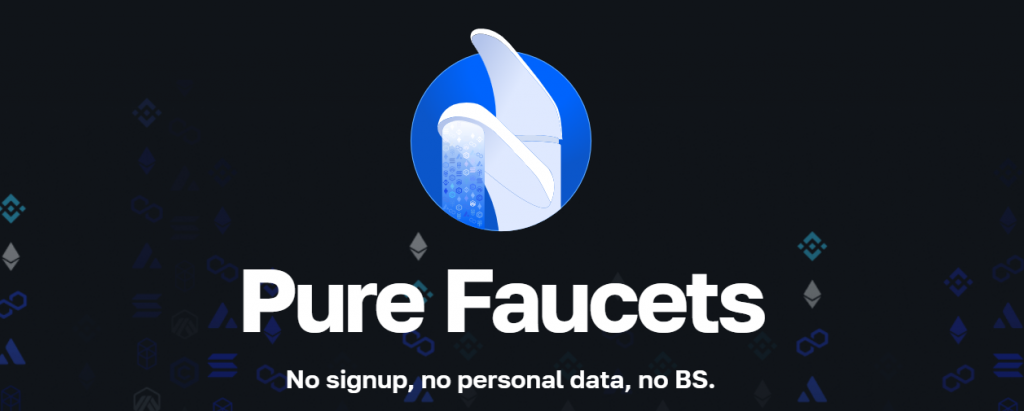
One of the topics we’ll cover in today’s article is the process of acquiring testnet tokens using a Linea Goerli faucet. If you’re eager to get going, we’ve briefly outlined the three-step tutorial below for those looking to jump straight into it:
- Step 1 – Download and Set Up MetaMask: Visit “metamask.io” to download and set up a Web3 wallet.
- Step 2 – Add the Linea Goerli Testnet: At the top left of the MetaMask interface, click on the drop-down menu currently showing the “Linea Goerli” option, toggle the ”Show test networks” button, select ”Linea Goerli”, and hit ”Add network”:
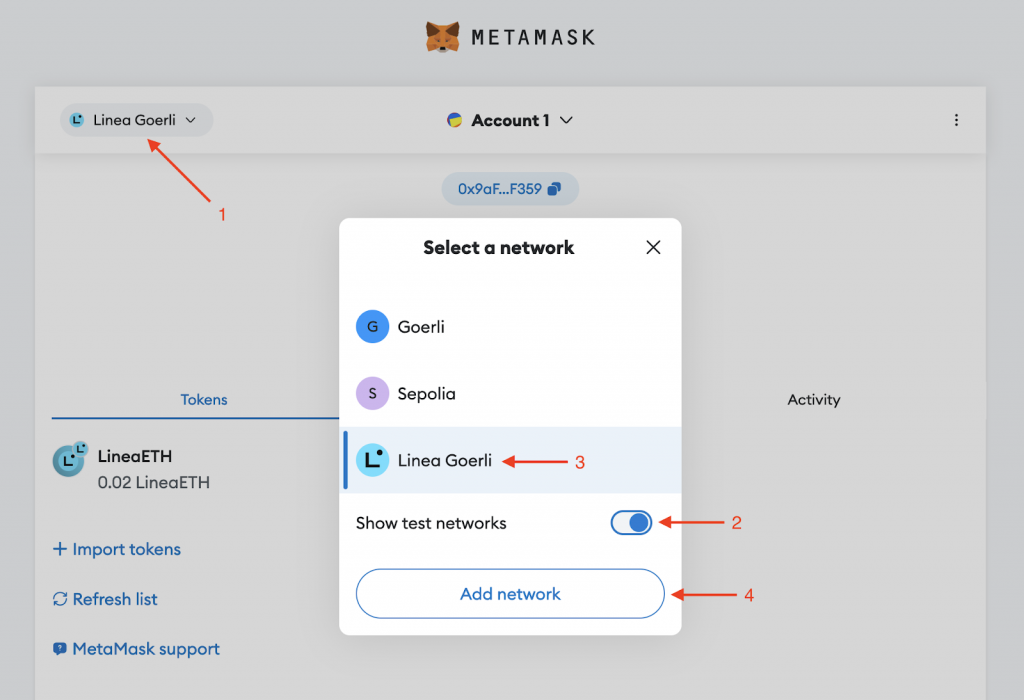
- Step 3 – Get Testnet Tokens Using the Linea Goerli Faucet: Visit Moralis’ testnet faucets page using the green ”Get Testnet Funds” button above. Next, scroll down, hit the ”Try Now” button for the Linea Goerli option, and follow the instructions:
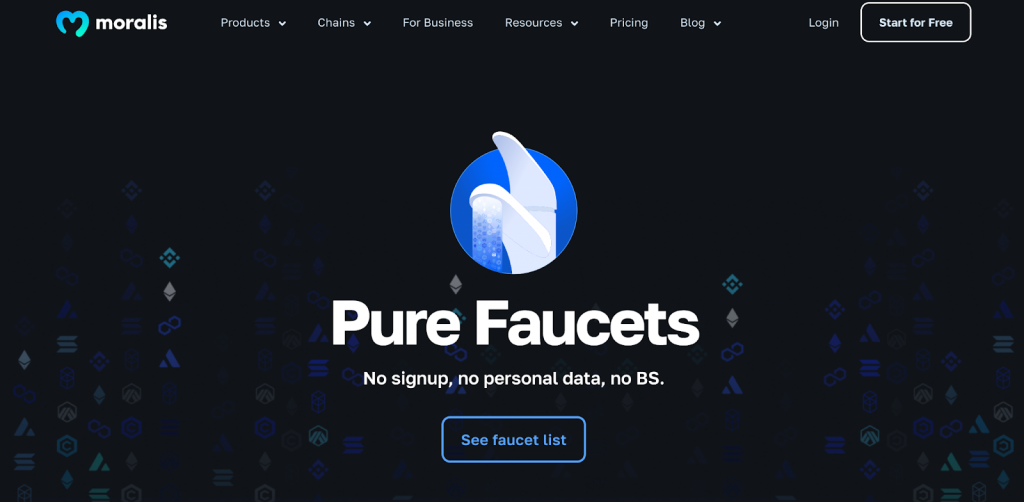
That’s it; getting testnet tokens using a Linea Goerli faucet doesn’t have to be more complex than that. From here, you can now use your newly acquired tokens to try out your projects for free on the Linea Goerli testnet!
Also, if you’re serious about building decentralized applications (dapps) and other Web3 projects, consider signing up with Moralis. You can create your account for free and get immediate access to industry-leading APIs. With these tools, you can immediately start leveraging the full power of blockchain technology to effortlessly build your next project!
Overview
In today’s article, we’ll expand the three steps above and teach you more in-depth how to get testnet tokens using a Linea faucet. But in short, these are the steps:
- Get a Web3 Wallet
- Add the Linea Goerli Testnet
- Acquire Testnet Tokens Using a Linea Goerli Faucet
However, before we get into the tutorial, we’ll kick things off by exploring the ins and outs of the Linea network. In doing so, we will cover both Linea’s mainnet and testnet. That said, if you’re already familiar with Linea and its networks, feel free to skip straight into the ”Tutorial: Get Testnet Tokens Using a Linea Faucet in 3 Steps” part.
Also, if you already know how to use a Linea faucet, you might want to put your skills to use immediately. If this is the case, then check out our articles on how to build a crypto dashboard project or how to create a blockchain explorer!
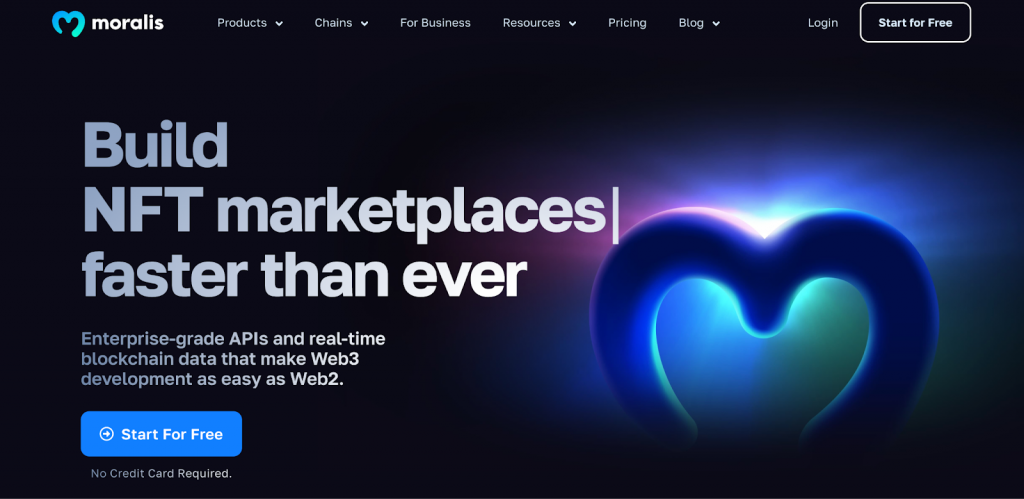
Nevertheless, without further ado, let’s jump straight into the Linea mainnet!
What is the Linea Mainnet?
Linea is an Ethereum Virtual Machine (EVM) equivalent zero-knowledge rollup (zk-rollup) network powered by Consensys. The purpose of the Linea network is to scale Ethereum with lower transaction fees and higher throughput.
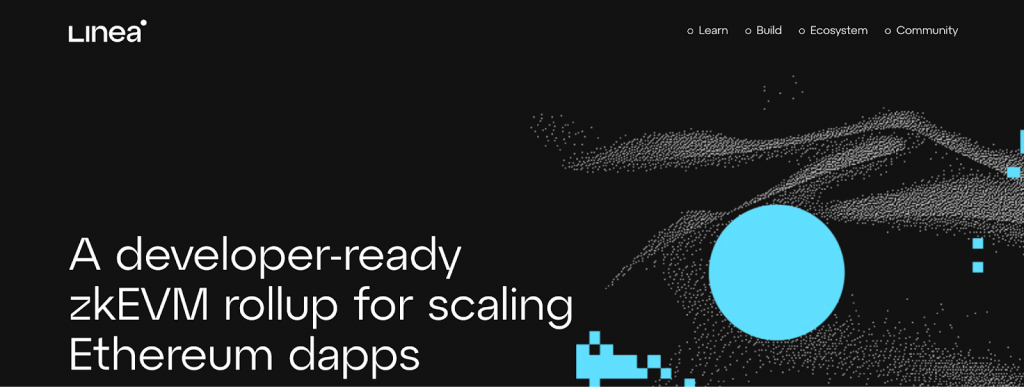
The out-of-the-box EVM compatibility enables effortless deployment of already existing Ethereum dapps and the creation of brand new ones that would otherwise be too costly on the mainnet. Consequently, the Linea network enables the community to use those applications at a fraction of the cost and at higher speeds compared to Ethereum.
So, how does this work?
Linea is able to boost throughput and lower transaction fees by leveraging quantum-resistant, lattice-based cryptography to make zero-knowledge proofs. These proofs include every transaction performed on Linea, which the network then rolls up to the Ethereum mainnet. With this technique, Linea can record every transaction to the Ethereum ledger while significantly cutting the costs of the security the mainnet provides. Furthermore, the Linea network’s fees are expected to be between 15-20 times cheaper than the Ethereum mainnet.
Linea tooling and infrastructure are developer-friendly, natively supporting multiple tools like MetaMask, Truffle, etc. In addition, Linea is approachable and easy to use, meaning that developers don’t need to be zk-rollup or zkEVM experts to build on the network.
Linea Roadmap
In addition to launching its mainnet, Linea also released a five-phased roadmap describing the network’s direction moving forward:
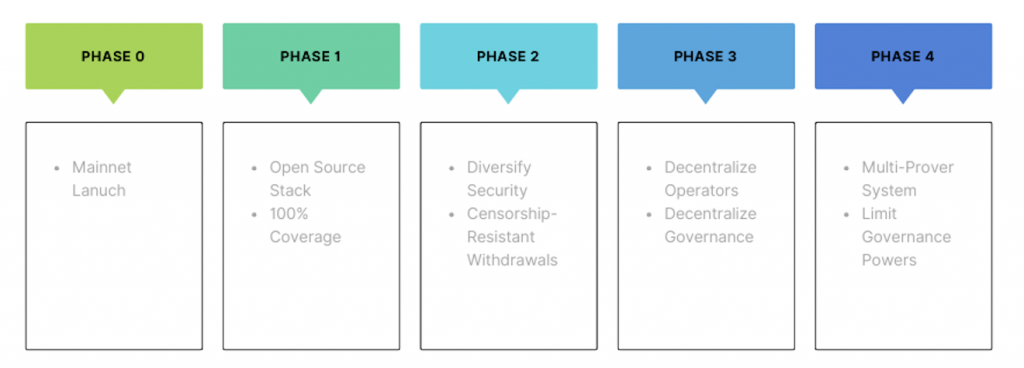
- Phase 0: Launch of the Linea mainnet.
- Phase 1: In the second phase, Linea is looking to open-source the code base and expand the EVM coverage to open up more use cases for the network.
- Phase 2: Diversify the network’s security council and enable censorship-resistant withdrawals.
- Phase 3: Decentralized provers and sequencers, which, up until this point, will have been run by the Linea team. During this phase, the network will also decentralize governance.
- Phase 4: In the final phase, Linea plans to implement a “multi-prover” system and limit governance powers.
The Linea Goerli Testnet Explained
Developing dapps requires rigorous testing, and doing so directly on a mainnet can quickly become expensive as you must pay for each transaction. Fortunately, this is where testnets enter the equation.
A testnet is a vital part of every developer’s tool kit, and testnets are usually identical replicas of their respective mainnets. Consequently, they provide safe and secure environments for you to test the performance of your projects before committing to a mainnet. By using testnets, you can also save a lot of time and resources when building dapps (decentralized applications).
The testnet for the Linea network is called Linea Goerli. Below, you can find important information about the Linea Goerli testnet, including a remote procedure call (RPC) endpoint that connects to the network:
Connecting to the Linea Goerli testnet lets you try your projects in a safe and secure environment. However, even though you’re building on a testnet, you still need to pay transaction fees using the network’s native token. Fortunately, when it comes to testnets, you can almost always leverage a faucet to acquire free tokens!
But what exactly is a Linea Goerli testnet faucet? How does it work?
What is a Linea Faucet?
In order to understand what a Linea Goerli testnet faucet is, we initially need to break down the intricacies of testnet faucets.
So, what are testnet faucets exactly?
Faucets are typically web-based apps enabling anyone to acquire free tokens. They often feature minimal and straightforward user interfaces where you can input the address of your Web3 wallet and hit a submit button. In return, the faucet supplies your wallet with a small, fixed amount of testnet tokens.

The functionality described above is exactly what a Linea faucet does for the Linea Goerli testnet. This means that a Linea Goerli faucet is a web application that allows you to get free tokens for the testnet. You can then use these tokens during the development process of your projects to pay for transactions.
At this point, you might be wondering where to find the best Linea Goerli faucet. Your best option is to visit our testnet faucets page. The page contains a curated list of multiple pure faucets – including a Linea faucet – without any of the fuss, such as tweet verifications and signup requirements!
If you’d like to explore faucets for other networks, you’ll find some additional articles below:
Tutorial: Get Testnet Tokens Using a Linea Faucet in 3 Steps
In the following sections, we’ll show you how to get testnet tokens using a Linea faucet in three straightforward steps. The Linea network is compatible with any EVM wallet; however, we’ll demo the process using MetaMask for this tutorial. Therefore, if you’re using another Web3 wallet, note that the process might slightly differ on occasion.
Furthermore, the initial step is to download and set up MetaMask. As such, if you already have a crypto wallet at your disposal, then feel free to jump straight into the second step!
Step 1: Get a Web3 Wallet
If you haven’t already, the first step is downloading MetaMask and adding it as a browser extension. So, head on over to “metamask.io” and click on the ”Download” button to the left:
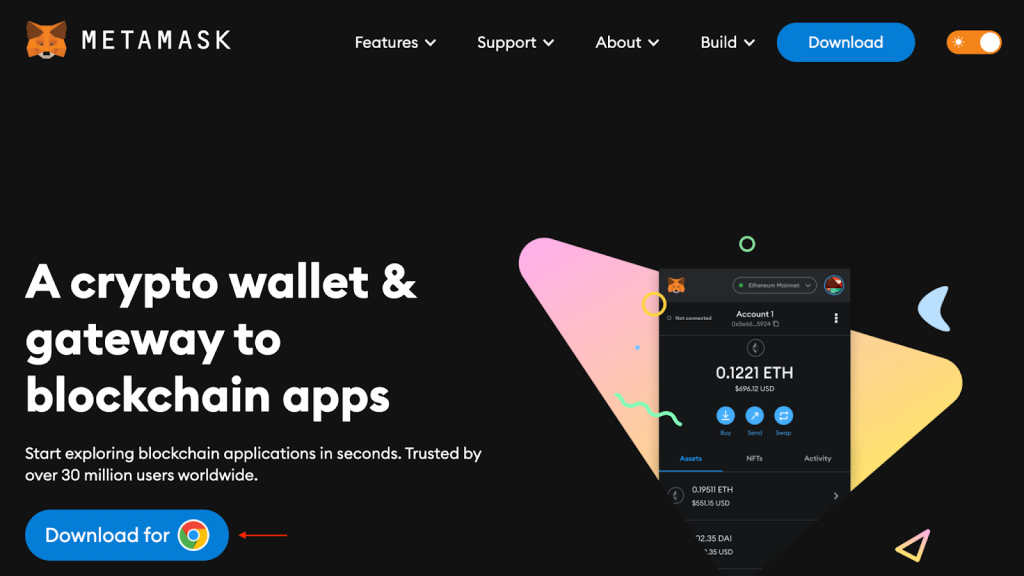
From there, add the extension to your browser:

Once you have downloaded the extension, you’ll be redirected to the following page:
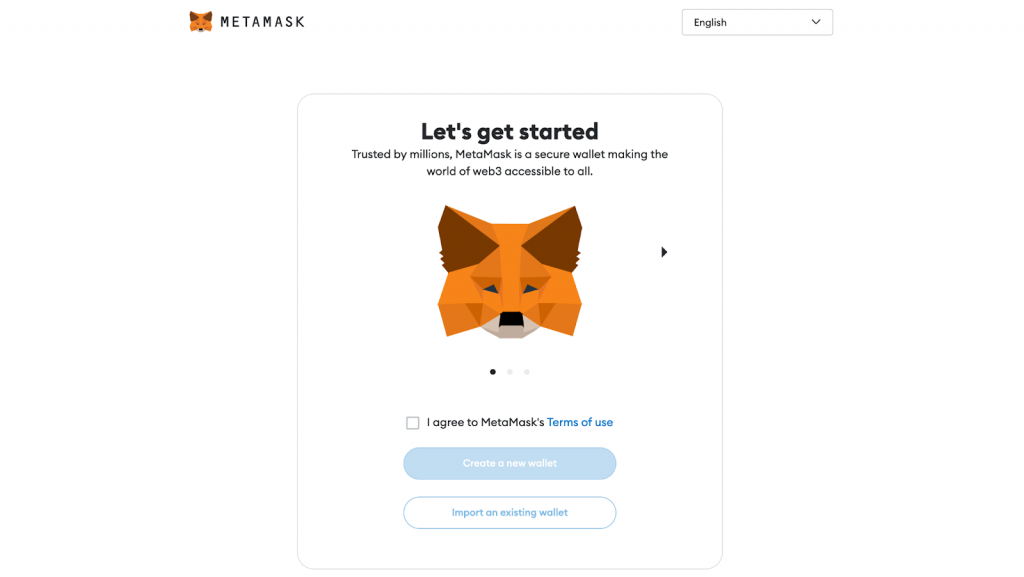
Here, you have two options: create a wallet from scratch or use an already existing one. Once you’re done creating or importing your wallet, you should find yourself on a page looking something like this:
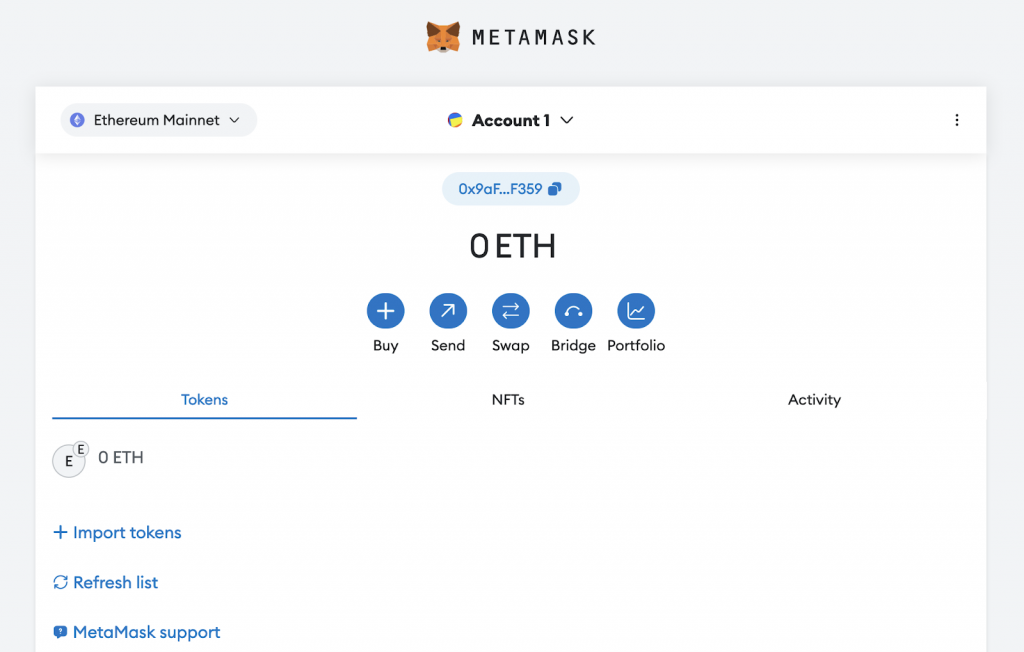
That’s it for setting up MetaMask. Next, we’ll show you how to add the Linea Goerli testnet to your account!
Step 2: Add the Linea Goerli Testnet
One of the luxuries of using MetaMask for this tutorial is that we can add the Linea Goerli testnet at the click of a few buttons. Simply hit the drop-down menu to the top left of MetaMask, toggle ”Show test networks”, select ”Linea Goerli”, and hit ”Add network”:
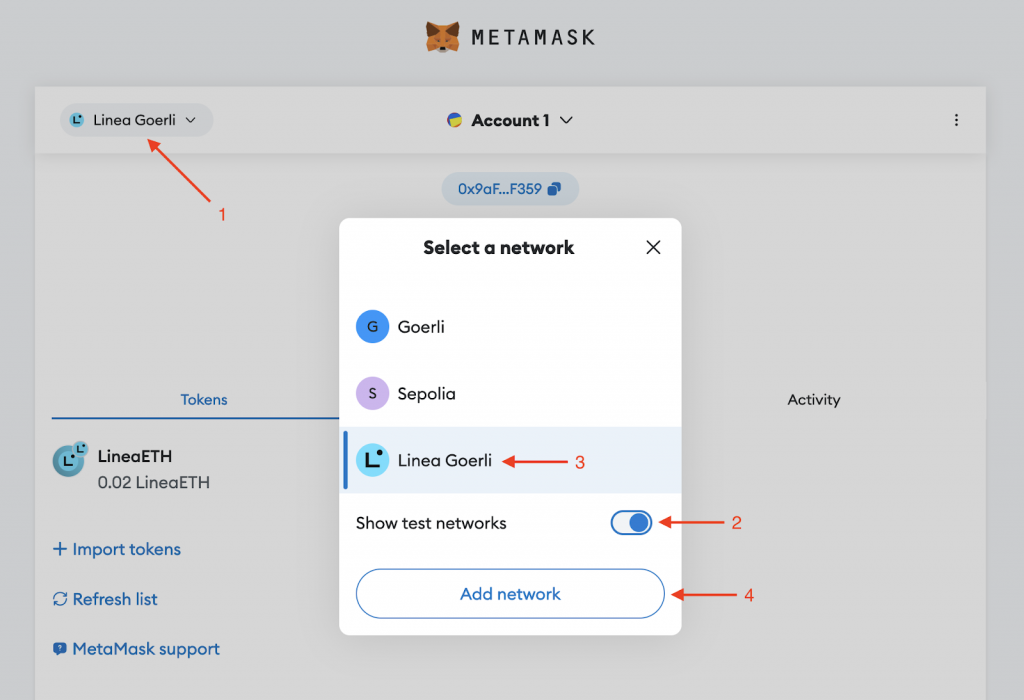
After adding the network, you might need to click on the drop-down menu again and switch to the Linea Goerli testnet. Once you have changed to the network, it should now look something like this:
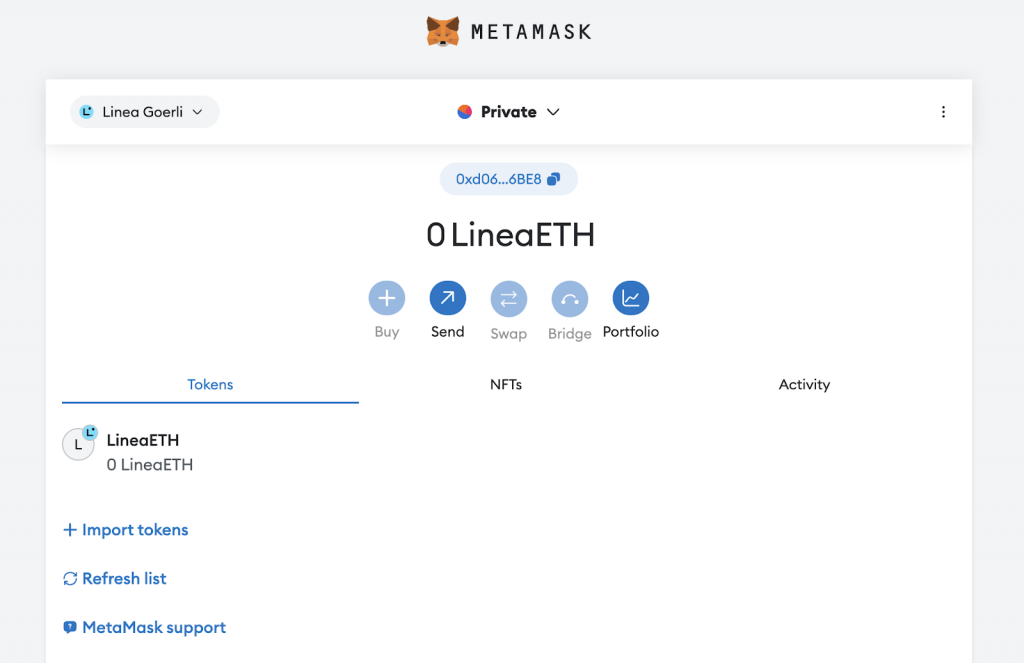
As you can see from the image above, we currently have no tokens. However, in the next step, we’ll show you how to use the Linea Goerli faucet to add some testnet tokens!
Step 3: Acquire Testnet Tokens Using a Linea Goerli Faucet
Now that you have a Web3 wallet at your disposal and have switched the Linea Goerli testnet, all that remains is to use a proper faucet to acquire some tokens. To do so, you simply need to head on over to the Moralis faucets page, select the Linea Goerli alternative, and follow the instructions:
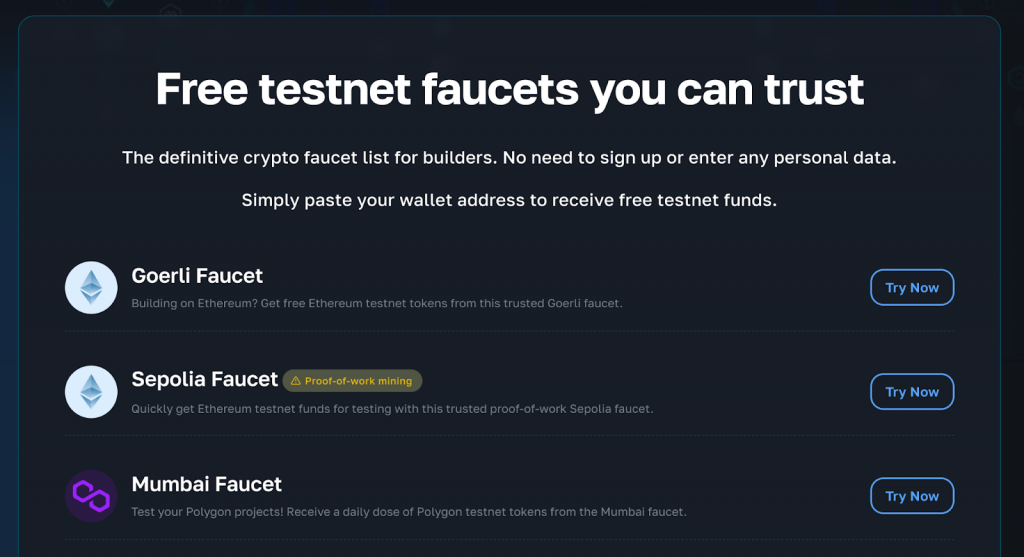
Once you complete the process, you’ll receive a small amount of Linea Goerli testnet tokens:
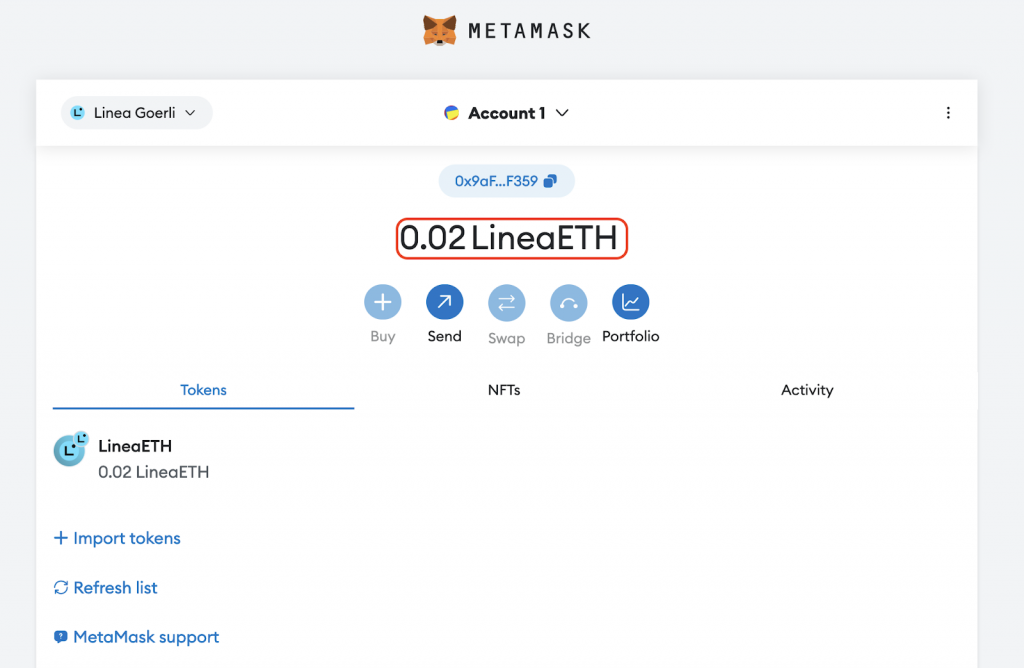
That’s it! Getting Linea Goerli testnet tokens using a faucet when working with Moralis is easy! From here, it’s now up to you to use your newly acquired tokens to start building innovative new projects on the Linea network!
What is a Linea Bridge?
Using a faucet isn’t the only way to get testnet tokens for the Linea Goerli network. Another option is to use a so-called blockchain bridge. But what exactly is a blockchain bridge? And how do they work?
A bridge is a tool that allows you to port assets from one blockchain to another. They solve one of the main pain points within the Web3 space: lack of interoperability. Consequently, blockchain bridges open up new markets and contribute to a multi-chain future.
So, a Linea bridge makes it possible for you to port assets from other chains to the Linea network. This means that, by leveraging a Linea bridge, you can, for instance, bridge Goerli ETH from Ethereum’s Goerli testnet to the Linea network. From there, you can use the tokens to pay for transactions and build Linea-based projects.
But Goerli ETH isn’t the only asset you can port with a Linea bridge. You can also effortlessly bridge tokens such as MATIC and BNB!
Summary: What is a Linea Goerli Faucet?
This article showed you how to acquire testnet tokens using a Linea Goerli faucet in three straightforward steps:
- Get a Web3 Wallet
- Add the Linea Goerli Testnet
- Acquire Testnet Tokens Using a Linea Goerli Faucet
In addition to showing you how to use a Linea Goerli faucet to acquire testnet tokens, we also covered the ins and outs of the network. In doing so, we learned it’s an EVM equivalent zk-rollup network powered by Consensys. The goal of the network is to scale Ethereum with higher throughput and lower transaction fees.
From there, we also explained what a Linea bridge is and how it works. You learned that it’s a tool for porting assets from one chain to another. As such, with a Linea bridge, it’s possible to, for example, bridge Goerli ETH from Ethereum to the Linea network.
If you liked this article, consider checking out more content here on Moralis’ Web3 blog. For example, read about OpenSea gas fees or how to get crypto data using a Python API! If you need some inspiration on what you can build using Moralis Web3 APIs, check out Moralis Money!
Also, remember to sign up with Moralis. You can create your account free of charge, and you’ll gain instant access to industry-leading APIs and development tools. So, join Web3 pioneers like MetaMask, Delta, and Unizen in leveraging the power of Moralis right now!
Read More: moralis.io



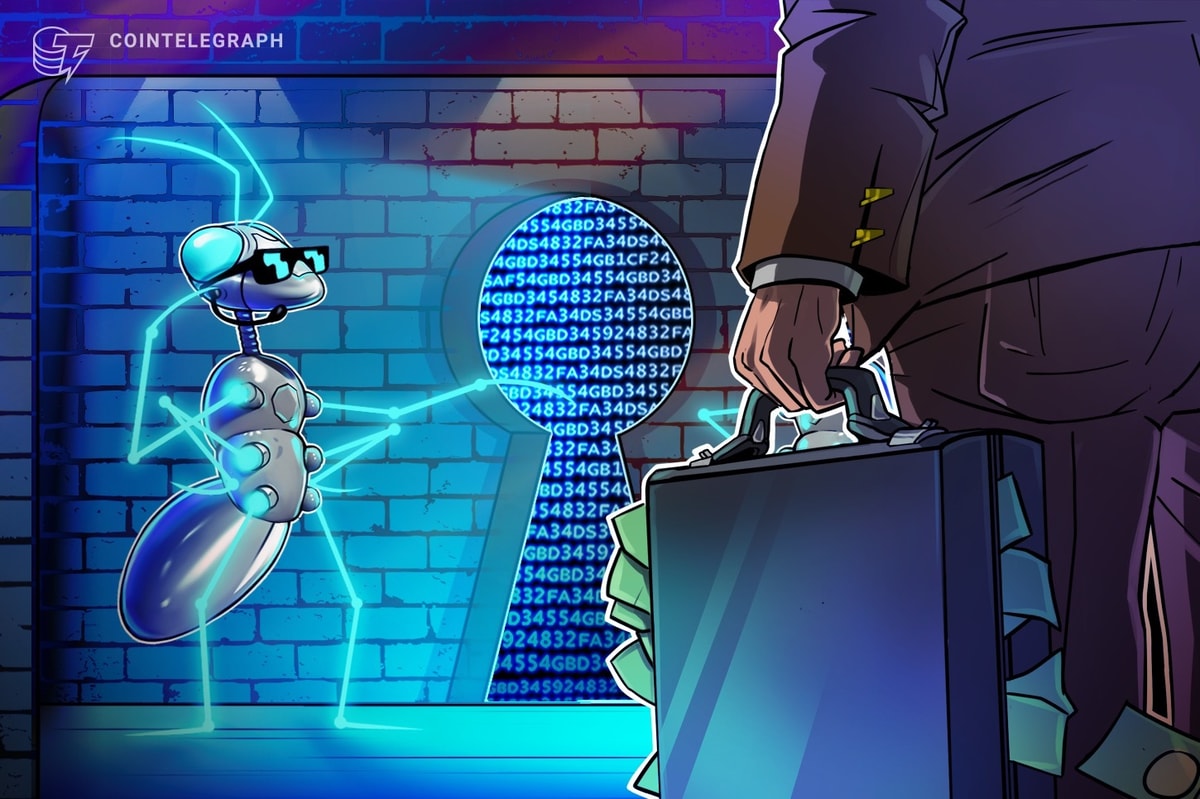
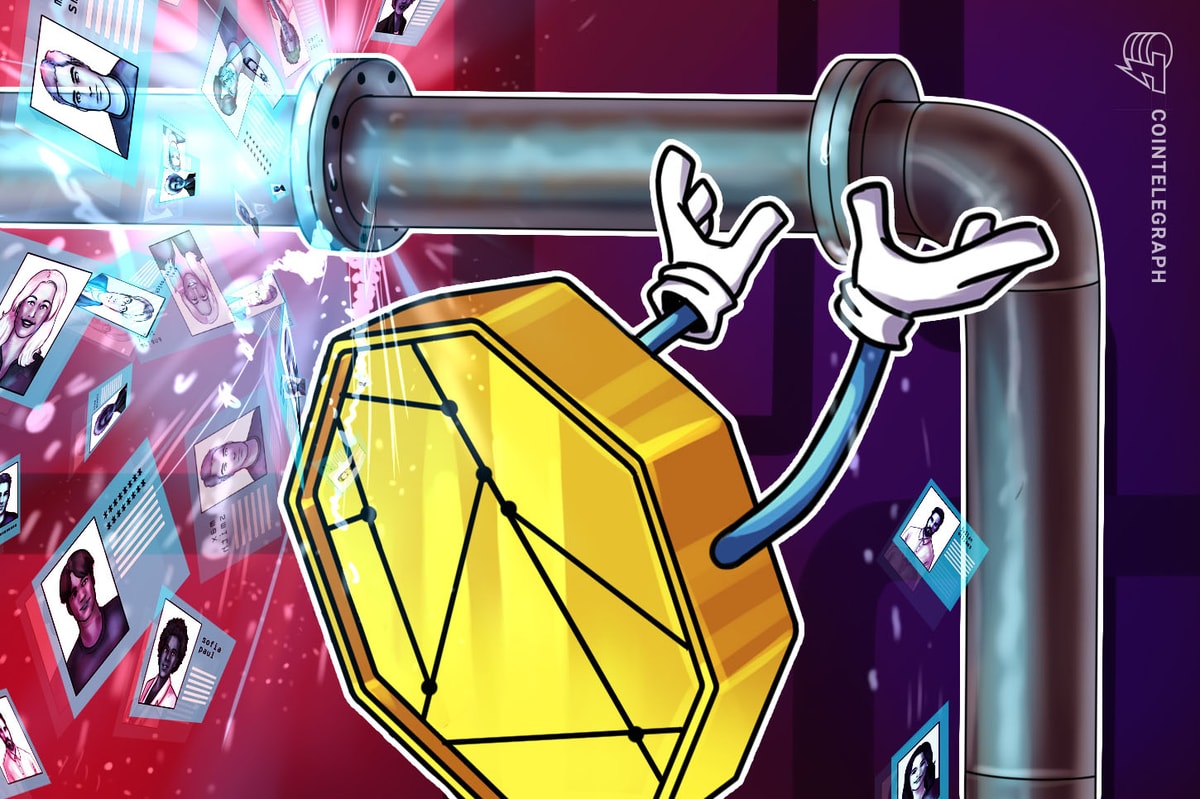



 Bitcoin
Bitcoin  Ethereum
Ethereum  Tether
Tether  XRP
XRP  Solana
Solana  USDC
USDC  Dogecoin
Dogecoin  Cardano
Cardano  TRON
TRON  Lido Staked Ether
Lido Staked Ether  Wrapped Bitcoin
Wrapped Bitcoin  Sui
Sui  Wrapped stETH
Wrapped stETH  Chainlink
Chainlink  Avalanche
Avalanche  Stellar
Stellar  Hyperliquid
Hyperliquid  Shiba Inu
Shiba Inu  Hedera
Hedera  LEO Token
LEO Token  Bitcoin Cash
Bitcoin Cash  Toncoin
Toncoin  USDS
USDS  Litecoin
Litecoin  Polkadot
Polkadot  WETH
WETH  Monero
Monero  Binance Bridged USDT (BNB Smart Chain)
Binance Bridged USDT (BNB Smart Chain)  Wrapped eETH
Wrapped eETH  Bitget Token
Bitget Token  Pepe
Pepe  Pi Network
Pi Network  Ethena USDe
Ethena USDe  Coinbase Wrapped BTC
Coinbase Wrapped BTC  WhiteBIT Coin
WhiteBIT Coin  Aave
Aave  Bittensor
Bittensor  Dai
Dai  Uniswap
Uniswap  NEAR Protocol
NEAR Protocol  Aptos
Aptos  OKB
OKB  Jito Staked SOL
Jito Staked SOL  Ondo
Ondo  Tokenize Xchange
Tokenize Xchange  BlackRock USD Institutional Digital Liquidity Fund
BlackRock USD Institutional Digital Liquidity Fund  Cronos
Cronos  Ethereum Classic
Ethereum Classic